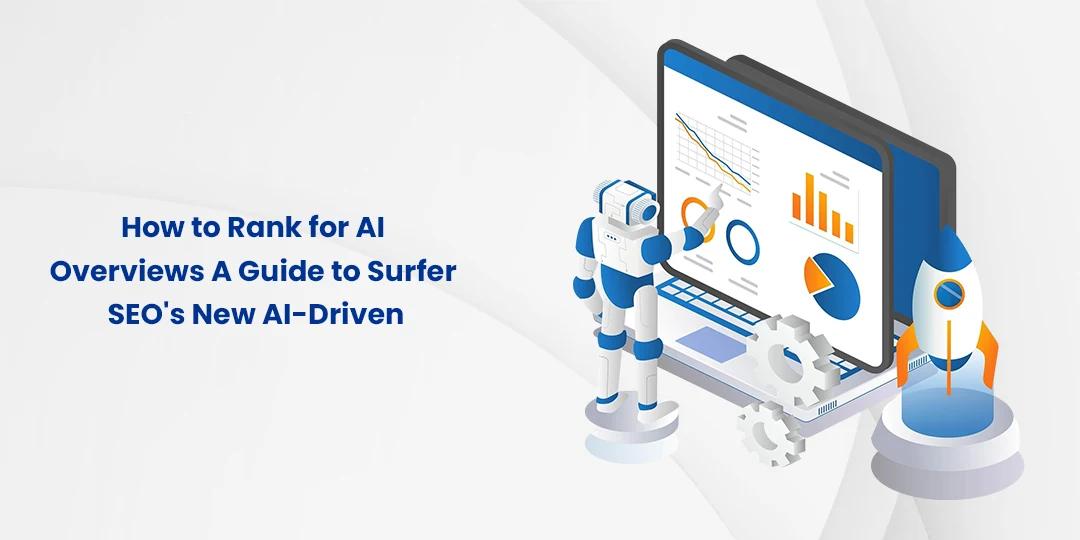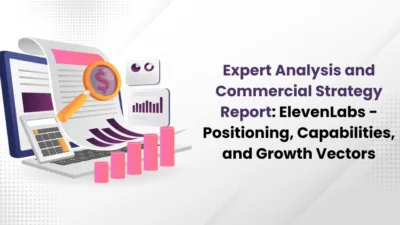Surfer SEO is a specialized, data-driven software platform that operates at the cutting edge of on-page search engine optimization (SEO) and the emerging field of Generative Engine Optimization (GEO). It is not an all-in-one SEO suite like Ahrefs or Semrush; rather, it is a content intelligence platform designed to eliminate the guesswork from content planning, creation, and optimization. The platform’s core value lies in its unique correlation-based methodology, which reverse-engineers top-ranking search engine results pages (SERPs) to provide granular, data-backed recommendations for new and existing content.
Surfer’s enduring relevance in a crowded market stems from its strategic hyper-specialization. While it lacks broad features like technical audits and backlink analysis, this narrow focus allows it to apply over 500 ranking metrics to a single task, providing a depth of analysis that generalized platforms cannot match. This focus is now extending to the age of generative AI. The platform has strategically pivoted its product roadmap to address the shift from traditional SEO to GEO, introducing new tools like the AI Tracker and the “Facts” feature to help content rank not only in Google but also in AI-generated answers from models like ChatGPT and Gemini. This dual-paradigm approach positions Surfer SEO as an essential tool for teams and agencies seeking to scale their content operations and secure visibility across both traditional and AI-driven search environments. The following report will provide a comprehensive analysis of its core functionalities, new features, intellectual underpinnings, and overall value proposition for various user personas.

Chapter 1: The Core Value Proposition: Why Surfer SEO Is Not “Just Another Tool”
1.1 A Primer on Correlation-Based SEO
Surfer SEO is defined as a cloud-based content intelligence platform that integrates content planning, creation, and optimization into a unified workflow. Its primary function is to analyze top-ranking competitor content for a given target keyword to generate data-driven recommendations. The fundamental principle behind this approach is that Google’s algorithm favors top-ranking pages for a reason, and by reverse-engineering the SERP, Surfer can identify the specific on-page factors that correlate with high rankings. This methodology aims to make the process of achieving higher organic traffic more predictable and efficient for its target audience of SEO professionals, content marketers, agencies, and businesses.
The platform’s origin as an internal agency tool provides critical context for its design philosophy. Tools that emerge from practical, in-the-trenches agency experience often prioritize solutions for recurring workflow challenges, such as scaling content production and managing multiple client projects. This is reflected in Surfer’s features, which facilitate collaboration through shareable editor links and provide structured optimization guidelines for clear communication. This strategic choice to provide unparalleled depth in a narrow domain rather than superficial breadth is a crucial distinction that justifies its cost and separates it from its competitors. While other platforms offer a wider array of SEO tools, Surfer’s specialization allows it to provide recommendations that are far more granular and data-driven, leveraging over 500 ranking metrics to fine-tune a page for on-page performance.
Chapter 2: Core Functional Analysis: The Engine of Data-Driven Content
2.1 The Content Editor: The Heart of the Platform
The Content Editor is widely considered the core of the Surfer platform. This feature allows a user to analyze competitor content for a specific keyword and then provides a real-time Content Score out of 100 as the user writes or edits their own content. The editor offers a detailed breakdown of competitor metrics, including word count, the number of headings and images, and a list of Latent Semantic Indexing (LSI) keywords that should be incorporated. It also provides suggestions for titles, headings, and questions, which can be easily inserted into the document. The platform is designed to be user-friendly, with a clean and straightforward interface that makes it approachable for users across the experience spectrum. Integrations with Google Docs and WordPress streamline the workflow, allowing users to move content seamlessly from the editor to their content management system.
2.2 The On-Page Audit: Revitalizing Existing Content
For websites with an established content library, the Audit tool is a powerful feature designed to analyze and improve existing web pages. By entering a URL and a target keyword, the tool provides a detailed report on any on-page issues that may be hurting search engine rankings. The audit compares the page against top-ranking URLs, identifying content gaps, missing LSI keywords and phrases, and offering recommendations for meta titles, meta descriptions, and internal linking structure. The tool can also be connected to Google Search Console to show traffic and ranking data, enabling users to track keyword drops and take corrective action.
2.3 The SERP Analyzer and Topical Map: Deconstructing the Competition
The SERP Analyzer dissects Google’s search results for any targeted keyword, revealing the commonalities among top-ranking pages. This component provides concrete data on what is currently working in a specific niche, including on-page factors, content structure, and even some backlink data. This helps users identify opportunities and refine their SEO approach. For broader content strategy, the Domain Planner (formerly Content Planner) helps users build content clusters around a main topic to establish topical authority. It provides suggestions for cluster topics based on a main topic and allows users to filter by search intent, search volume, and content score.

2.4 Critical Analysis: The Correlation vs. Causation Debate
The foundation of Surfer SEO’s methodology is not without a significant intellectual debate: the argument that correlation does not imply causation. While Surfer’s data shows what factors correlate with high rankings—such as a specific word count or the frequency of LSI keywords—it does not definitively prove that these factors
cause a page to rank. A third, unseen variable, such as a website’s overall domain authority, could be the true cause of a high ranking, while other factors are merely correlated with it.
This distinction is not merely academic; it has a direct impact on how the tool should be used to avoid a critical user pitfall: over-optimization. The Content Editor’s gamified score can tempt users to blindly follow every suggestion, forcing keywords and phrases into content just to get a higher score. When a user strictly follows every keyword or NLP term recommendation without considering natural language flow and reader experience, the result can be repetitive, unnatural, and keyword-stuffed content. This harms the user experience, potentially leading to a higher bounce rate and lower engagement. Algorithms are increasingly focused on user experience signals, and such content may be penalized, negating any perceived SEO gains. The most successful users of Surfer SEO are those who can interpret the platform’s recommendations critically and augment their content with data, rather than allowing the data to fully dictate the content. The tool is a powerful data provider, but the user remains the strategic decision-maker.
Chapter 3: The New Frontier: Surfer SEO’s Response to Generative AI
3.1 Understanding Generative Engine Optimization (GEO)
As the digital landscape evolves, so too does the nature of search. A new discipline, Generative Engine Optimization (GEO), is emerging as the method for content to be found and cited by AI tools like ChatGPT, Gemini, and Google’s AI Overviews. While traditional SEO focuses on keywords, backlinks, and technical fixes to rank a page in search results, GEO focuses on structuring content so it can be easily pulled and included in AI’s direct, generative answers to user queries. This requires a shift from technical language to a natural, conversational tone, and a focus on providing clear, useful answers that demonstrate expertise, experience, authority, and trustworthiness (E-E-A-T). This includes using structured data with clear headings and bullet points to help AIs digest the content and make it more likely to be cited.
3.2 Analysis of New AI-Driven Features
Surfer SEO’s product development roadmap reflects a deep understanding of this strategic shift. The platform is positioning itself as a leader in GEO, introducing a suite of tools that go beyond traditional SEO to help content gain visibility in AI-driven search:
AI Tracker: A unique add-on designed to monitor a brand’s visibility in responses from large language models (LLMs) like ChatGPT, Perplexity, and Google AI Overviews. It provides daily insights into which of your pages and competitors are being cited, and for which prompts. This tool provides a new metric for “search visibility,” allowing teams to track an entirely new channel and refine their GEO strategy.
The “Facts” Feature: This tool identifies content gaps and suggests “Facts” to add, which a new study shows can boost a page’s chance of ranking in Google and securing AI citations by up to 25%. This feature directly addresses the GEO principle of providing authoritative, factually rich content that AIs are more likely to pull from. It is now also available in 15 languages, allowing for localized content that improves AI reach.
Surfer AI & Surfy: An AI content writer that generates ready-to-publish articles based on competitor analysis. Built on a powerful GPT-4o engine, it produces top-quality content with a boosted context size to reduce repetition and improve transitions. The platform is designed to generate traffic and is priced to scale, promising to accelerate the content creation process. Surfy, an AI writing assistant, offers a conversational interface to help edit, rephrase, and refine content in real-time.

AI Detector & Humanizer: These are quality control tools that help ensure content sounds natural and is less likely to be flagged as machine-written. The AI Detector flags machine-written text, while the Humanizer rewrites it to sound more authentic, helping content pass detection and maintain a high-quality human tone.
These features form a comprehensive workflow for the modern content team. A user can leverage Surfer AI to generate a factually rich, on-page optimized draft. Then, they can use the AI Detector and Humanizer for quality control, and the Content Editor for final optimizations. The AI Tracker then measures the page’s success by showing new AI citations, providing a feedback loop that informs future strategy. This integrated approach is Surfer’s new competitive advantage, as its AI is “Built to Rank” and is backed by a full suite of tools designed to measure its success in both the traditional and new search paradigms.
Chapter 4: Comprehensive Review: Strengths and Weaknesses
4.1 The Case for Adoption: Key Strengths
Data-Driven Methodology: The platform’s core strength is its ability to provide specific, data-backed recommendations based on a large dataset of over 500 ranking factors. This moves the SEO process from guesswork to a more predictable, systematic approach.
Proven Results: User testimonials and case studies report significant, measurable results, including an average 15% boost in organic traffic and keywords jumping from the second page to the top 10. This provides tangible evidence of the tool’s effectiveness for content-focused strategies.
Real-Time Feedback: The Content Editor’s live Content Score and suggestions are highly praised for their ability to trim hours off of drafting and auditing time, with users reporting a 50% faster turnaround on revisions.
Intuitive User Interface: Despite the depth of its features, Surfer’s interface is described as clean, straightforward, and easy to use for both beginners and seasoned SEOs. The design makes it approachable and lowers the barrier to entry.
Strong Integrations: Surfer’s seamless connections with popular platforms like Google Docs, WordPress, and Jasper simplify the workflow and allow creators to incorporate SEO into their existing processes with minimal friction.

4.2 A Balanced Perspective: Identifying Core Weaknesses
Over-Optimization Risk: A significant and recurring concern from users is the risk of producing “robotic,” over-optimized, keyword-stuffed content if they blindly chase a perfect Content Score. This requires users to apply editorial judgment and not rely solely on the tool’s recommendations.
Steeper Learning Curve: While the interface is user-friendly for core tasks, the depth of features can be overwhelming for new users who may need to spend time getting comfortable with the various menus and toggles.
Cost: The pricing can be steep for freelancers, small businesses, or solo entrepreneurs with limited budgets, especially when compared to other solutions.
Credit-Based Model: The credit-based system for key features can be confusing, and credits can be consumed quickly, particularly when using the AI writer. Unused credits for a given month do not roll over, which can feel restrictive.
Limited Customer Support: The platform’s customer support is limited to email and forums, with no live chat for urgent troubleshooting, which can be a point of friction for users with complex technical issues.
Table 1: Surfer SEO Strengths vs. Weaknesses
| Strengths | Weaknesses |
|---|---|
| Powerful Content Editor with real-time feedback and scoring | Risk of over-optimization and producing “robotic” content |
| Data-driven methodology based on direct competitor analysis | Can be overwhelming for new users due to the depth of features |
| Strong integrations with Google Docs, WordPress, and Jasper | High cost for small businesses and freelancers |
| On-page Audit tool effectively identifies gaps in existing pages | Credit-based model can lead to rapid credit consumption |
| New features address the shift to AI-driven search (GEO) | No live customer support for urgent troubleshooting |
Chapter 5: Investment Analysis: Pricing, Plans, and Value
5.1 Detailed Breakdown of Pricing Tiers
Surfer SEO offers three primary pricing tiers, with options for monthly or annual billing. All plans come with a 7-day money-back guarantee. Opting for annual billing provides a significant discount, with savings of up to 20% compared to monthly payments.
Essential Plan: At a monthly cost of $99, or $79 per month when billed annually, this plan is targeted at individuals and small teams. It includes core features like the Content Editor, Content Audit, and Keyword Research, with limited credits for each.
Scale Plan: Priced at $219 per month, or $175 per month when billed annually, the Scale plan is designed for growing teams that need higher output and more advanced features. It includes all the features of the Essential plan with significantly higher limits. Crucially, it is the lowest-tier plan that includes the AI Tracker by default.
Enterprise Plan: This tier requires contacting sales for a custom quote and is intended for large agencies and brands with high volume, complex needs, or compliance requirements. It includes priority support, API access, white labeling, and enterprise-grade security.
5.2 The Credit System Explained
Surfer SEO operates on a credit-based system for its key tools. The number of credits available per month or year varies significantly between plans. For example, the Essential plan offers 30 Content Editor articles per month, while the Scale plan offers 100. The AI Article credits are even more limited, with the Essential plan providing 5 per month and the Scale plan offering 20.
A key detail to note is that unused credits
do not roll over to the next month or year, with the exception of when a user upgrades their plan. Certain features, such as the AI Tracker and Rank Tracker, are available as paid add-ons for an additional fee, starting at $95 and $8.50 per month, respectively.
5.3 Value-for-Money Assessment by User Persona
The pricing model itself is a crucial signal of Surfer’s intended customer base. The value proposition is maximized for teams and agencies operating at a content-driven scale, where the cost is easily justified by increased output and efficiency. The Essential plan, while offering a lower entry point, is noted by users as being “a bit costly for small businesses and solopreneurs” and offers restrictive credit limits. The fact that it lacks key features like the full audit suite and the AI Writer further underscores this point.
In contrast, the higher-tier “Scale” plan includes more credits, more team members, and advanced features like the AI Tracker and personalized onboarding, which are essential for a professional team. The “Enterprise” plan, with custom pricing and dedicated support, is clearly designed to meet the needs of the largest content operations. The friction points for individual users—cost, credit limits, and support—are strategically designed to filter out casual users and focus on the enterprise market, where the cost is a non-factor and the value is in the high-efficiency solution for scalable content operations.
Table 2: Surfer SEO Pricing and Credit System Comparison
| Feature | Essential Plan | Scale Plan |
|---|---|---|
| Annual Cost | $79/mo (billed annually) | $175/mo (billed annually) |
| Target Persona | Individuals & small teams | Growing teams & agencies |
| Content Editor Articles | 30/mo or 360/yr | 100/mo or 1200/yr |
| AI Articles | 5/mo or 60/yr | 20/mo or 240/yr |
| Humanize Words | 50,000/mo or 600,000/yr | 100,000/mo or 1,200,000/yr |
| Auto-Optimize | 30/mo or 360/yr | 100/mo or 1200/yr |
| AI Tracker | Optional add-on ($95/mo for 25 prompts) | Included (5 daily prompts) |
| Rank Tracker | Optional add-on ($8.50/mo for 100 keywords) | Optional add-on ($8.50/mo for 100 keywords) |
| Team Members | 1 | 4 |
Chapter 6: Final Recommendation and Implementation Plan
6.1 A Final Verdict: Is Surfer SEO the Right Tool for Your Team?
Based on a comprehensive analysis, Surfer SEO is a powerful, highly specialized tool that is not a replacement for an all-in-one SEO suite. The platform’s value is maximized for teams, agencies, and businesses that have a clear focus on on-page content creation and optimization at scale. For these users, the platform offers a predictable, data-driven workflow that can trim hours off of content production and auditing, leading to tangible results in organic traffic and search engine rankings. The strategic pivot to address Generative Engine Optimization (GEO) with new features like the AI Tracker and “Facts” positions Surfer as a leader in a new field, making it a forward-thinking investment for any organization that wants to secure visibility in both traditional and AI-driven search paradigms.

6.2 Best Practices for a Successful Rollout
For a successful implementation, a team should approach Surfer SEO with a clear strategic plan.
Integrate the Workflow: Start by leveraging the native integrations with Google Docs or WordPress to create a seamless content production flow. This minimizes friction and allows writers and SEOs to work within their familiar environments.
Invest in Training: The depth of Surfer’s features can present a learning curve for new users. It is critical to provide team training on the platform’s advanced functionalities and, most importantly, on the crucial need for editorial judgment to avoid over-optimization.
Strategically Select Competitors: Surfer’s recommendations are based on competitor analysis. Teams should be trained to select relevant competitor pages and exclude high-authority outliers like Wikipedia or pages with a different search intent to ensure the recommendations are relevant and actionable for their specific niche.
6.3 Expert Recommendations for Avoiding Common Pitfalls
The following recommendations are crucial for maximizing the return on investment and avoiding the common pitfalls associated with the platform’s correlation-based methodology:
Do not chase a perfect score: The Content Score is a guide, not a final destination. The primary goal is to produce high-quality, engaging content that reads naturally and meets the user’s needs. Prioritize natural language and user experience over hitting every metric suggested by the tool.
Augment, don’t automate: Use Surfer AI to generate drafts and outlines, but expect to perform significant editing, fact-checking, and refinement. The tool is a powerful assistant, but the final, high-quality output should reflect human expertise and unique value.
Leverage the audit function: A high return on investment can often be found by using the audit tool to optimize existing, underperforming content rather than always creating new content from scratch.
Frequently Asked Questions (FAQs)
(1) What is a good Surfer SEO score?
The score is a guide, not a definitive measure of success. A Content Score of 70 or higher is generally considered good, but the ultimate priority should be content that reads naturally and provides value to the user.
(2) How much does Surfer SEO cost?
The pricing for annual plans ranges from $79 to $175 per month, with custom pricing available for enterprise-level clients.
(3) Is Surfer AI free?
No, Surfer AI is not a free tool. It is part of the paid plans and operates on a credit-based system for content generation.
(4) Is Surfer SEO better than Semrush?
This is not an accurate comparison, as the two platforms serve different purposes. Surfer is a specialized content optimization tool, while Semrush is a comprehensive, all-in-one SEO suite with broad features like backlink analysis and technical audits. The choice between them depends on a team’s specific needs and strategic focus.





